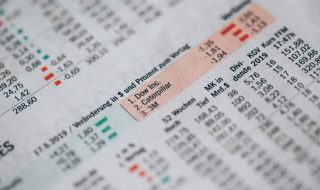
As a novice in the world of investments, it is important to know the basic differences between stocks and bonds. Stocks provide partial ownership in a corporation, while bonds are loans from an individual to a company or government.
One of the biggest differences between these two is how they generate profit. Stocks must appreciate in value and be sold later on. On the other hand, bonds pay fixed interest over time. Continue reading this article to know other notable differences between stocks and bonds.
STOCK MARKET VERSUS BOND MARKET
A place where investors can trade equity securities such as common stocks is called the stock market. Buying stocks (i.e., equity securities) entails that you are buying a very small ownership stake in a company. Equity holders purchase stocks in a company on a belief that it will perform well and that the value of the shares they purchased will increase. These stocks are traded on stock exchanges.
The key function of the stock market is to bring sellers and buyers together into a regulated, fair, and controlled environment where they can execute their trades. This regulated environment not only helps the investors, but also the corporations whose equity securities are being traded. The economy thrives when the stock market remains its robustness.
Let us move on to the bond market. The bond market is where investors go to trade debt securities (e.g., bonds), which may be issued by the governments or the corporations. The bond market is also known as the credit or debt market. Buying a bond or a debt security entails that you are lending money for a period of time and charging interest. You can compare the process to how banks charge interests to its debtors.
The key function of the bond market is to provide its investors with a steady, albeit nominal, source of regular income. In some cases, investors receive bi-annual interest payments. Many investors choose to hold bonds in their portfolios to save money for long-term needs such as retirement and their child’s education.
WHERE STOCKS AND BONDS ARE TRADED
Stocks are traded on exchanges, which are places where buyers and sellers decide on a price. Some exchanges are carried out on a trading floor or other physical locations. While, other exchanges are carried out virtually and are composed of a network of computers.
In contrast, the bond market does not have a centralized location to trade. Bonds mainly sell over the counter. As such, individual investors do not usually participate in the bond market. Those who participate include large institutional investors like pension funds foundations, asset management firms, and investment banks. Individual investors who wish to invest in bonds do so through a bond fund managed by the asset manager.
RISKS OF STOCKS VERSUS RISKS OF BONDS
Investors of stocks may be exposed to risks such as currency risk, liquidity risk, interest rate risk, and geopolitical risk. Moreover, stocks run the risk that the company could perform poorly or fall into bankruptcy and disappear altogether.
When it comes to bonds, investors are more susceptible to risks such as interest rates and inflation. When the interest rates are high and you need to sell the bond before it matures, you may end up getting less than what you paid for. If you are purchasing a bond from a company that is not financially sound, you are embracing the risks of credit. The bond issuer may not be able to make the interest payments, leaving itself open to default.
BOTTOMLINE

Image Credits: unsplash.com
Many people opt to invest in both stocks and bonds to diversify. The appropriate mixture of stocks and bonds in your portfolio must consider your tolerance for risks, personal timeline, and investment objectives. Typically, stocks and bonds do not fluctuate at the same time. Think about that.





